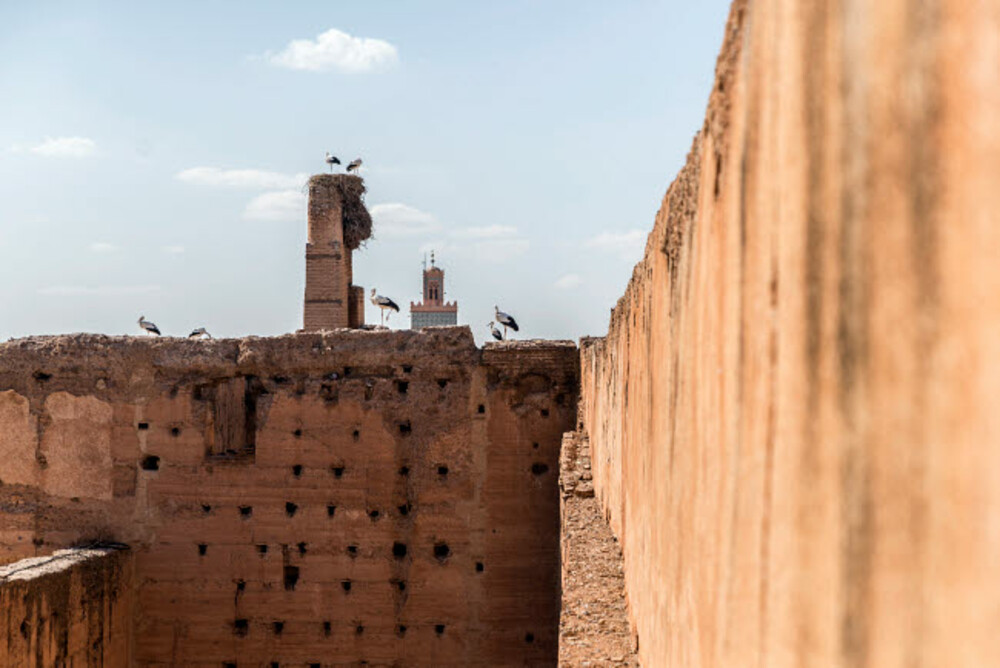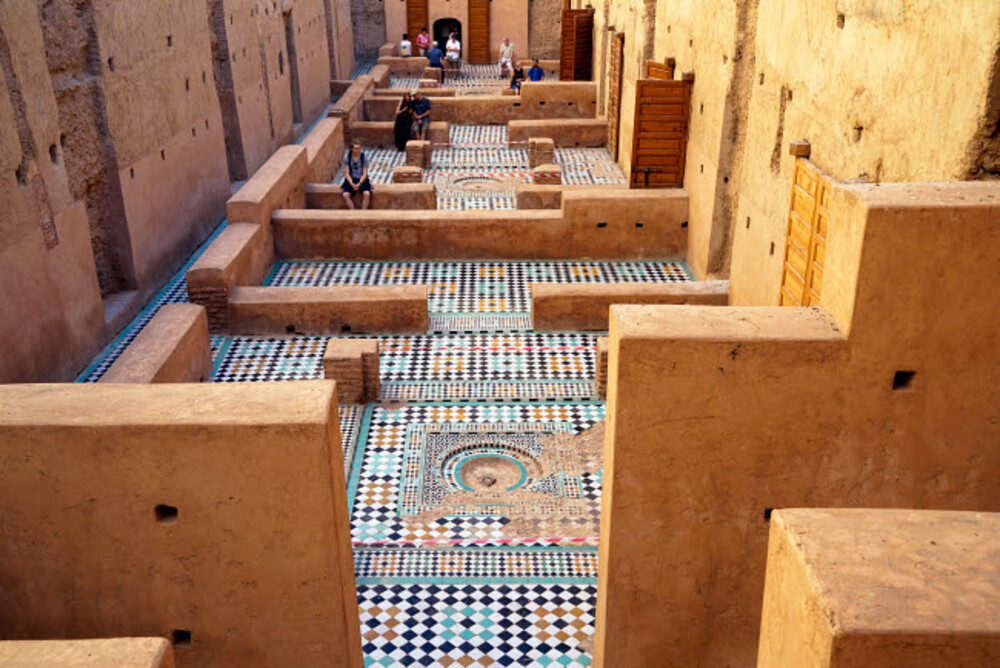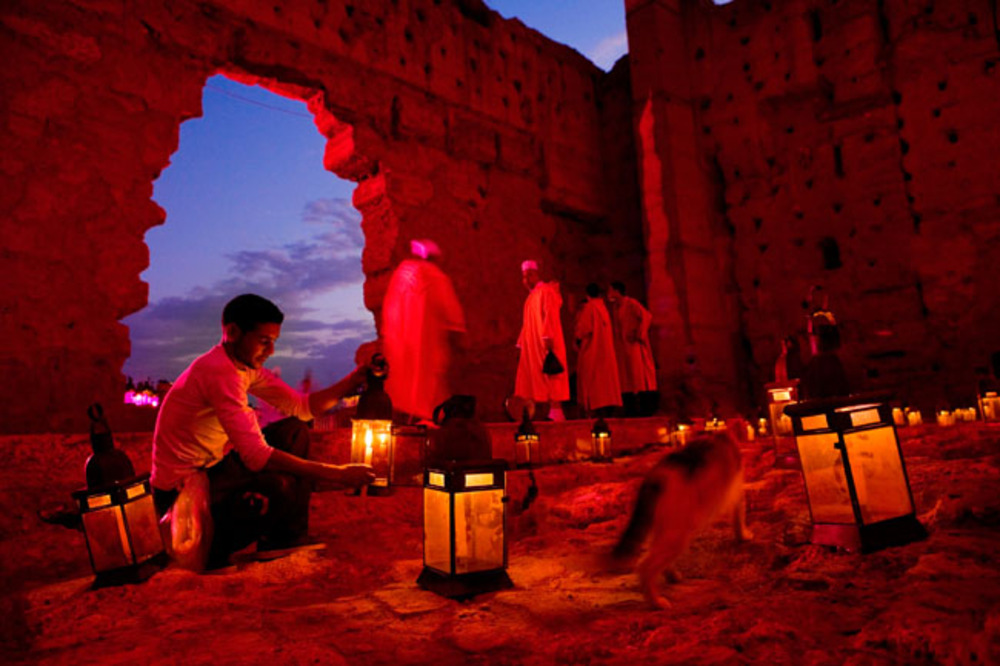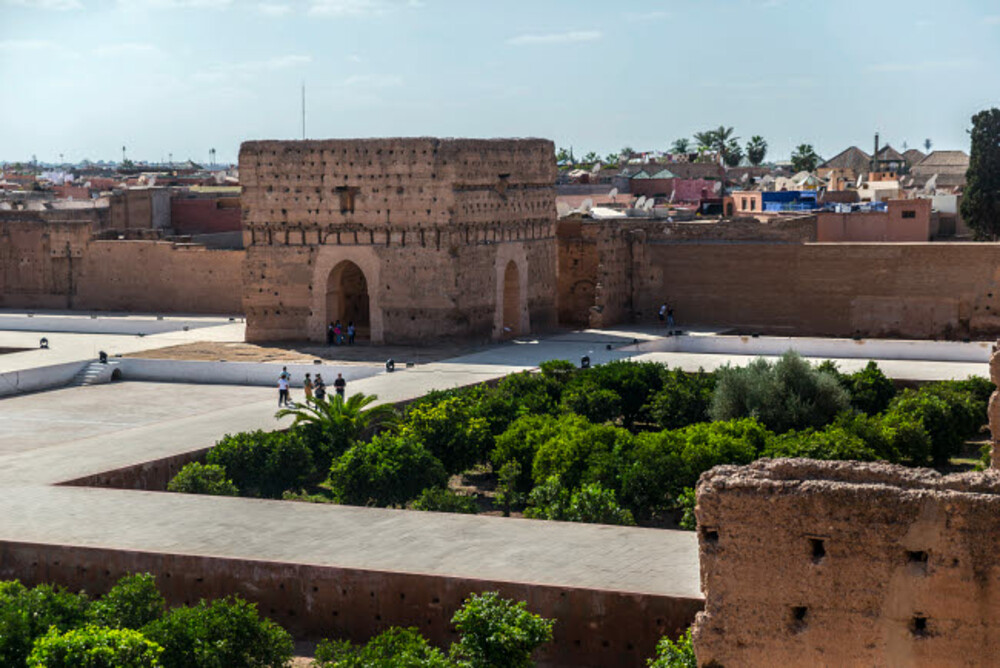Nestled within the vibrant city of Marrakech, the ruins of the El Badi Palace stand as a testament to Morocco’s rich cultural heritage and architectural prowess. Built in the 16th century by Sultan Ahmed al-Mansur, this once-magnificent palace now lies in majestic ruin, offering visitors a fascinating glimpse into the country’s illustrious past.
Introduction to El Badi palace
The El Badi Palace, translating to “The Incomparable Palace,” was commissioned in 1578 by Sultan Ahmed al-Mansur, aiming to showcase his opulence and authority. Spanning over 25 years, its construction involved thousands of laborers, culminating in a magnificent complex comparable to the most splendid palaces of its era. The palace symbolized the wealth and power of the Saadian dynasty in Morocco, boasting intricate architectural details, expansive courtyards, and luxurious chambers. Despite its subsequent decline and partial ruins, the El Badi Palace remains a testament to the grandeur of Moroccan history and architectural prowess.
History and significance


Construction and purpose
Commissioned by Sultan Ahmed al-Mansur after defeating the Portuguese at the Battle of the Three Kings, the El Badi Palace embodied his burgeoning power and riches. Intended as a testament to his elevated status, it earned the title “The Incomparable Palace.” Designed to exude grandeur and opulence, the palace became a symbol of the Sultan’s wealth and prestige. Its construction marked a significant era in Moroccan history, reflecting the triumph of Al-Mansur and the flourishing of the Saadian dynasty. With its intricate architecture and lavish decor, the palace stood as a majestic monument to the Sultan’s achievements and ambitions.
Golden age and decline
During its golden age, the El Badi Palace was celebrated for its opulent architecture, boasting elaborate tilework, intricate carvings, and verdant gardens. Regrettably, its grandeur waned after the passing of Sultan Ahmed al-Mansur. Across time, abandonment and looting precipitated the gradual decay of the palace, resulting in the haunting remnants we encounter today. Despite its former splendor, neglect has rendered it a poignant testament to the passage of time, offering visitors a glimpse into a bygone era of magnificence now cloaked in the melancholy beauty of its ruins.
Exploring the ruins

Layout and architecture
The El Badi Palace, sprawling across 25 acres, boasted a vast complex featuring pavilions, courtyards, and gardens. Its design intricately blended Andalusian and Moorish influences, evident in towering walls and majestic arches evoking its former splendor. The architectural marvel, steeped in history, showcased ornate detailing and intricate craftsmanship reflective of its era. Its expansive grounds once hosted grand ceremonies and gatherings, offering a glimpse into the opulent lifestyle of its past inhabitants. Today, the palace stands as a testament to its rich cultural heritage, inviting visitors to explore its grandeur and immerse themselves in its storied past.
Key features
Despite its dilapidated condition, the El Badi Palace continues to enchant visitors with its striking elements. The expansive sunken gardens, adorned with lush vegetation, provide a serene oasis amidst the ruins. Towering walls, intricately decorated with ornate reliefs, stand as a testament to the palace’s former grandeur. Additionally, the iconic Koutoubia minaret, with its graceful architecture, offers sweeping vistas of Marrakech’s bustling skyline, serving as a timeless symbol of the city’s rich history and cultural heritage. Despite the passage of time, these features serve to transport visitors to an era of opulence and splendor, preserving the allure of the El Badi Palace.
Restoration efforts

Conservation projects
In recent years, concerted efforts have been undertaken to safeguard the El Badi Palace from ongoing deterioration. Supported by governmental bodies and global entities, conservation initiatives prioritize stabilizing the dilapidated edifices and reviving their erstwhile grandeur. These endeavors involve meticulous restoration work aimed at preserving the historical significance and architectural splendor of the palace. By combining local expertise with international resources, the aim is to ensure that this cultural heritage site endures for future generations, serving as a testament to the rich history and cultural legacy it represents.
Preservation challenges
Restoring the El Badi Palace entails overcoming significant hurdles due to insufficient historical records and the monumental scope of the endeavor. Preserving its original essence while ensuring structural integrity demands meticulous planning and specialized knowledge. Striking a balance between conservation and authenticity is crucial, necessitating intricate strategies to safeguard the palace’s heritage while honoring its historical significance. This intricate process involves navigating intricate complexities to revive the palace to its former glory while respecting its cultural heritage, ensuring that each step taken preserves its rich legacy for future generations.
Cultural significance
Influence on Moroccan architecture
Despite its dilapidated condition, the El Badi Palace remains a significant influencer in Moroccan architecture and design. The graceful proportions, detailed ornamentation, and fusion of styles within its ruins inspire architects and artisans. Its legacy endures, offering insights into historical construction techniques and aesthetic preferences. The palace’s enduring allure lies in its ability to transcend time, captivating observers with its elegant remnants. Today, it stands not only as a testament to past grandeur but also as a living museum of architectural ingenuity, inviting exploration and admiration from visitors worldwide.
Tourism and local economy
The El Badi Palace, a renowned tourist hotspot, captivates global visitors with its awe-inspiring ruins. Its historical significance and grandeur make it a magnet for tourists worldwide. Beyond its cultural allure, the palace plays a vital role in the local economy, offering employment prospects and fostering economic growth through tourism-driven ventures. Its enduring appeal not only enriches the cultural landscape but also sustains livelihoods and fosters community prosperity, making it a cherished gem in Morocco’s tourism industry.
Conclusion
The El Badi Palace stands as a poignant reminder of Morocco’s glorious past, offering a window into the splendor of its imperial heritage. While its walls may crumble and its gardens may fade, the spirit of grandeur and magnificence that once defined this remarkable palace lives on in the hearts and minds of all who visit.
FAQs
- Is the El Badi Palace open to the public?
- Yes, the El Badi Palace is open to the public for visits. However, certain areas may be restricted for conservation purposes.
- What is the best time to visit the El Badi Palace?
- The El Badi Palace can be visited year-round, but it’s best to avoid the peak summer months when temperatures soar. Spring and autumn offer more pleasant weather for exploring the ruins.
- Are guided tours available at the El Badi Palace?
- Yes, guided tours are available at the El Badi Palace, providing visitors with insights into its history and architecture.
- Can I take photographs at the El Badi Palace?
- Yes, photography is allowed at the El Badi Palace for personal use. However, commercial photography may require special permission.
- Is there an entrance fee for the El Badi Palace?
- Yes, there is an entrance fee to visit the El Badi Palace, with discounted rates available for students and seniors.



